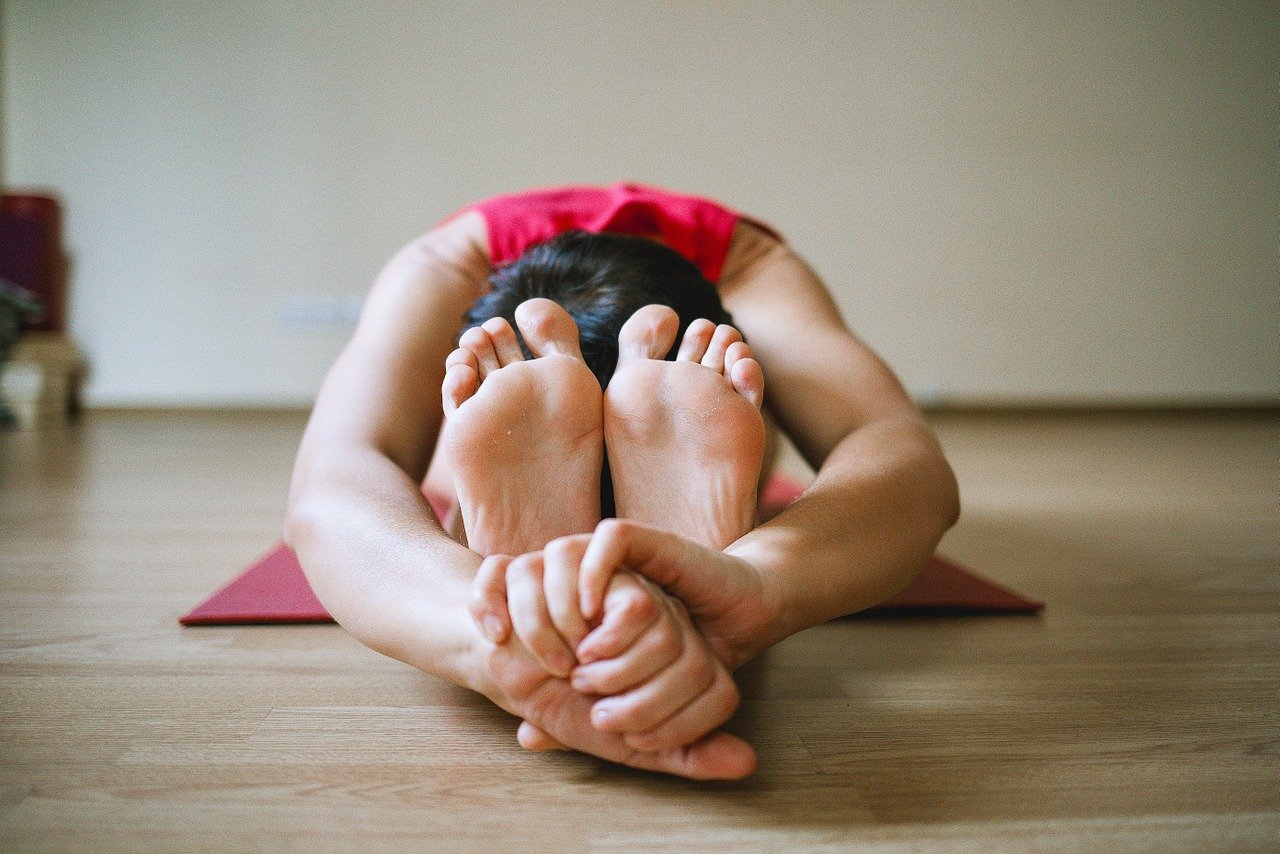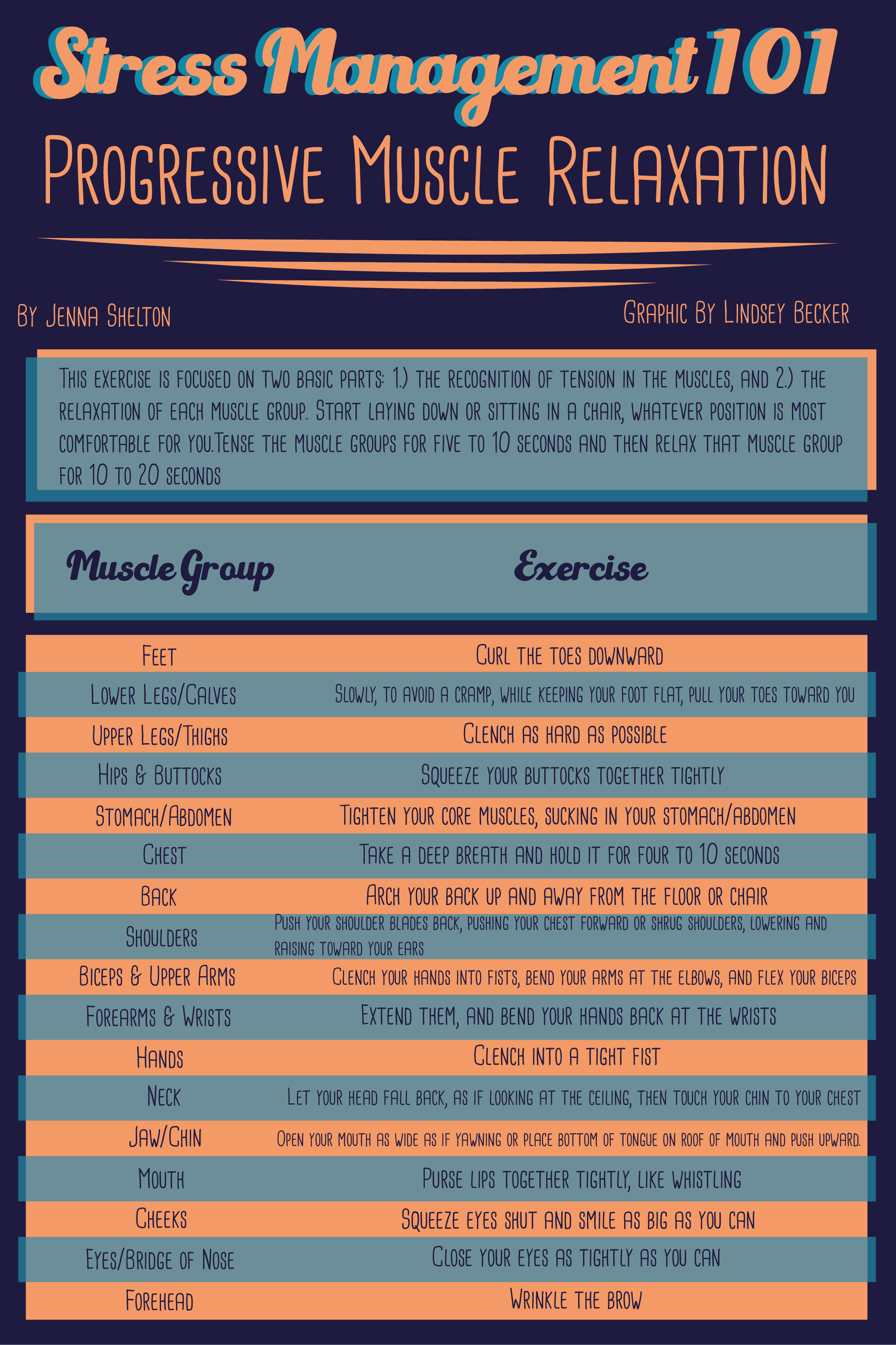By Jenna Shelton
Sometimes, when one is stressed or anxious about something, the body responds with strange ways of protecting the individual, and often they may end up with an aching back or a painful and sore neck. This muscle tension needs to be relieved, but how can individuals do that when they are living through a pandemic and are constantly stressed?
Depending upon your efforts, if you can set aside about 20 minutes, three to five times a week, which is about how long it takes to perform this exercise on your entire body, you could receive the full benefits of progressive muscle relaxation. These benefits include an overall sense of well-being, lowered blood pressure, decreased muscle tension, which in turn reduces the body’s need for oxygen, and the reduction of fatigue and anxiety.
This exercise is focused on two basic parts: 1.) the recognition of tension in the muscles, and 2.) the relaxation of each muscle group. Basically, you tense the muscle groups for five to 10 seconds and then relax that muscle group for 10 to 20 seconds, while working the muscle groups in a certain order. Normally, most people work from head to toe, or vice versa, but if you are short on time and/or there is a certain area that you carry your stress in or that bothers you specifically, focus in on those areas; for example, if, when you get really stressed out, you get knots in your shoulders and pain in your neck area, focus in on that area and skip the time on your legs and booty.
Make sure you have tightened up enough that you can feel the tension, but not enough that you feel a great deal of pain. You may feel some pain, especially when first starting this, but as you continue, it will get less painful, and easier as you become less stressed and more relaxed!
Some other basic instructions to prepare for a successful session would be to be mindful of your surroundings. Minimize the distractions when finding a location to practice the progressive muscle relaxation exercises, turn off the TV and use soft lighting and get comfortable. Find a super comfortable chair or mat to relax on and wear loose clothing, taking off your shoes and finding a position that will give you the greatest ability to relax.
**Progressive muscle relaxation can be performed multiple ways, the routine instructed in this article is the favored method of the author of this article, who has tried the different techniques and prefers this approach the best. Again, this exercise could be done in any sequence, from head-to-toe, or in reverse, or focus in on a specific area, but the following instructions are the toe-to-head method.
Also, just like with the practice of deep breathing, the process of this exercise, practiced multiple times throughout the day will assist with decreasing stress and may even help those who struggle with falling asleep at night. Often, people that first begin progressive muscle relaxation utilize resources such as apps or audio walkthroughs that guide one through the order of this method until it becomes a natural sequence to them.
There are many free apps or videos on YouTube, not to mention L&C’s Student Activities offers a free Yoga Class on Wednesday evening at 6 pm on Zoom where a similar activity, called Savasana, is practiced and is how every session is ended to promote relaxation, if one is interested in trying it out.
For more information regarding the weekly free yoga session, please contact Student Activities Advisor, Jared Hennings, at jhenning@lc.edu or you can call his office at 618-468-6400.






The following is a list of the muscle groups in order and how to tense them. Remember to lie down when you do this.